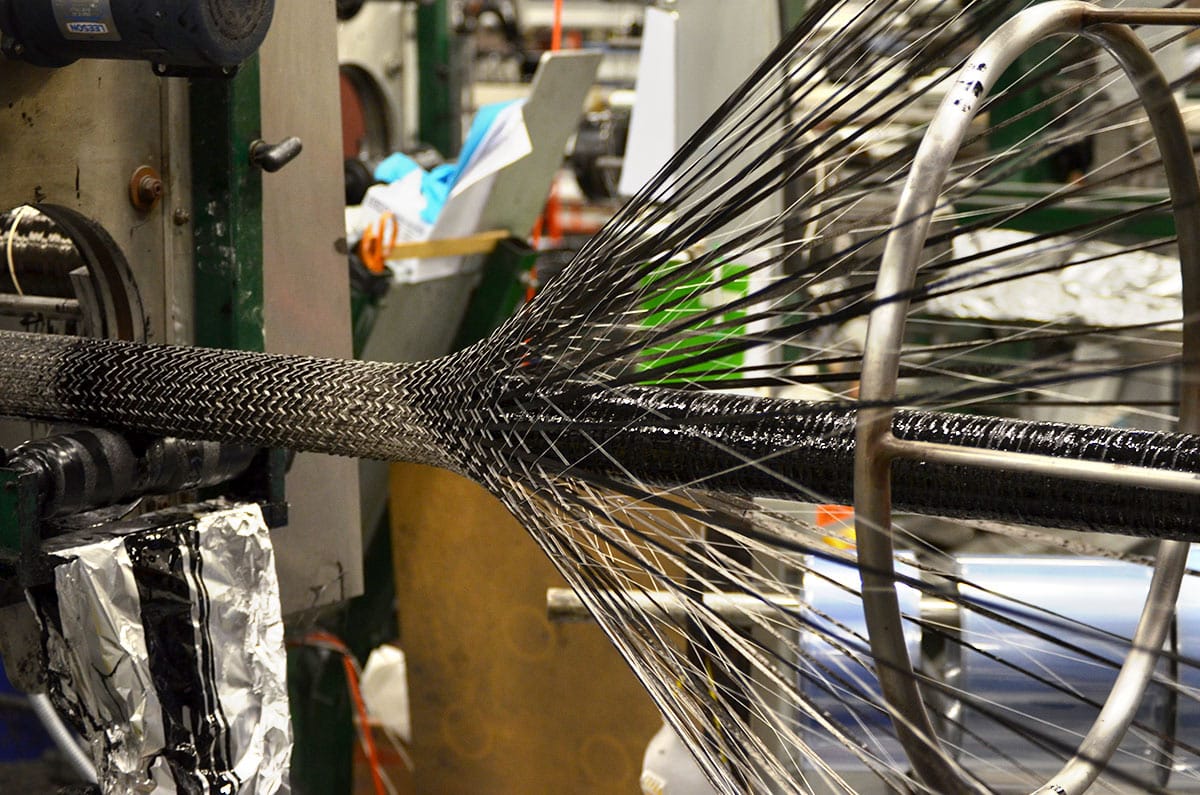4-Axis braiding is a process in which we braid carbon fibers over a mandrel. The braiding machine stays in one place and an aluminum mandrel traverses inside of the braiding hoop. The layer of braid is then wet-out with epoxy resin at a 2nd stage in the machine. The laminate is then consolidated and cured at 280F.
- Braided composite structures offer extreme durability and toughness due to the interlocking fibers and no seams.
- If damage does occur, it does not tend to propagate within the structure.
- Typical braided carbon tubes have approximately 75% of fibers directly on the axis of the tube. These fibers are continuous fibers from one end of the part to the other. 10 % of the fibers are +/- 45 deg and around 15% are 90 deg (hoop)
- We have the ability to make some adjustments to the percentages of fiber orientation; however, it is not possible to get high percentages of +/- 45 deg.
- The inherent high percentage of fiber on the 0 axis makes a braided tube a very good compression or bending tube.
- Because the machine stays in one place and the mandrel traverses, there is no length limitation to the parts that can be built (the building length, oven length and mandrel lengths are limiting factors, but the process itself in not limited).
- We typically braid longer length parts or larger manufacturing runs compared to pre-preg
- Braided carbon fiber tubes tend to have more surface ripples and small voids in the laminate. This is not a structural issue but it can be a cosmetic issue and it may have an effect on the OD tolerance of the part.
Examples of some applications for braided tubing
Communications towers, large antenna assemblies, portable antennas, drone wing spars, aircraft structural tubing, sailboat spars, truss tubing, reinforcing tubes, spacer tubes, stiffening tubes, compression struts, GPS towers, high tension cable struts, awning support tubes, structural beams, low interference towers.

![]()


